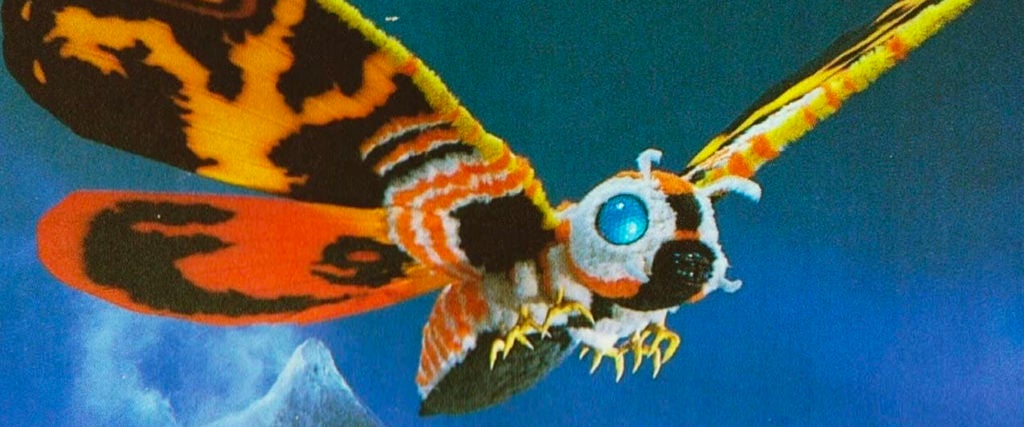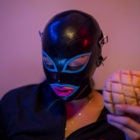Earlier this week, I asked myself what seemed to be a simple question: “What gender is Godzilla?” Though American remakes and English-language translations use he/him pronouns for the towering reptile — and they’re often called the “King of the Monsters” — every Japanese film since the 1954 original referred to the scaly behemoth with gender-neutral pronouns. In my eyes, it seemed to beg a deeper inquiry.
But as I set out to investigate the gender of this enormous, radiation-breathing lizard — who’s also the star of the longest-running film franchise of all time — it dawned on me that maybe this was an intrusion of privacy. Unless Godzilla goes out of their way to share that information with me on the record, their gender, sex and pronouns are none of my business. I felt almost ashamed of my thoughtlessness.
Besides, throughout the history of Japanese studio Toho’s nearly 70 years of kaiju movies, the gender of only one monster has consistently mattered enough to be stated on record. I speak, of course, of Mothra, the towering, divine insect that fights both with and against Godzilla. Now that’s a girlboss I care about.
Debuting in 1961 in her titular film, Mothra was always different from other kaiju. For one, while Godzilla and other dino-types like Rodan and King Ghidorah can be fickle in whether they fight for or against humanity, Mothra is consistently a protector of the Earth and its people. And unlike most of Godzilla’s spiky reptile and gooey mutant contemporaries — who are born of pollution and radiation — Mothra is simply a supernatural moth goddess. For the most part, she’s just vibing, only wreaking havoc and laying waste to cities when someone disturbs her colorful egg or kidnaps the Shobijin, the tiny fairy friends that sing to her. She never starts shit, but she’s always ready to finish it.
Queer people love Mothra. You could count her among other beautiful women of the 1960s who became gay icons like Barbra Streisand, Diana Ross and Cher. Whenever she first appears in a film, it’s typically as a somewhat drab larva, but soon, she spins an enormous chrysalis around herself from silk, eventually giving way to her au-naturel look, which features bold blue eyes and thunderous wings that explode into a beautiful tapestry of tangerine, crimson and black. Always a true diva, she has a dramatic outfit reveal built into her very life cycle. Even the way she fights is glamorous, flapping her wings and releasing glittering poisonous scales or dazzling bolts of lightning.
Alyssa Heflin, an archivist and fellow Mothra acolyte, says she’s always read Mothra as trans. “In her debut movie, she destroys the phallic symbol of Tokyo Tower in her larval form and then creates her nest inside of it,” she tells me.
Heflin thinks the thing about Mothra that draws queer and trans people to her, aside from her tremendous beauty, is her cycle of metamorphosis. “Obviously, a character who changes into what’s generally understood to be a ‘true form’ is going to read as trans or queer,” she says. “That’s easy to project. But unlike a lot of fictional characters read as trans, birth is very much key to her myth, with the gigantic Mothra Egg being an important facet of her story. And she doesn’t really give birth to kids, she kind of just gives birth to herself. So she doesn’t just undergo one metamorphosis; she’s constantly undergoing that process of change that makes the metaphor hit closer to home.”
In a sense, she’s both eternally her own mommy and forever her own baby, locked in a forever cycle of growth, death and rebirth.
I’ve always been terrified of bugs of all shapes, but admittedly, I see nothing but warmth and radiance in Mothra and all of her capacity for creation and destruction. In my room, I have the poster for her original 1961 film in which she decimates Tokyo in search of her fairy friends, with taglines that read, “Mightiest monster in all creation! Ravishing a universe for love!” These words oddly comfort me, as does witnessing her beat the hell out of other monsters. When I see Mothra erupt from a cocoon in an explosion of glitter and light to immediately zap Godzilla in the eye or drag them by their tail, I think to myself, “Now that’s a woman.” When I watch her flutter through the sky to behead a cyborg alien dinosaur before setting them ablaze, I know that’s real girl power. That’s feminism.

